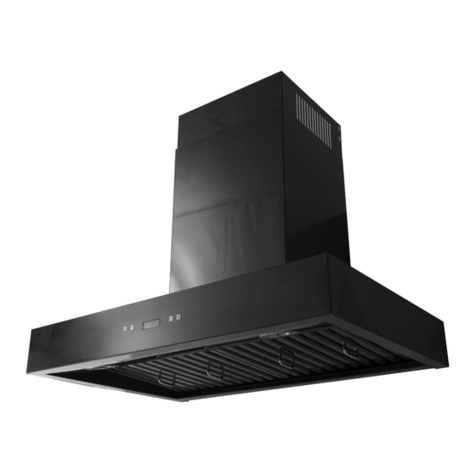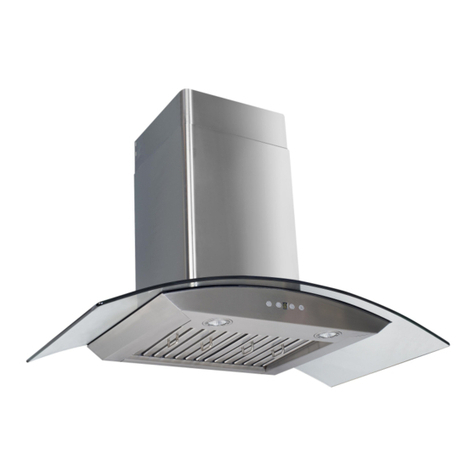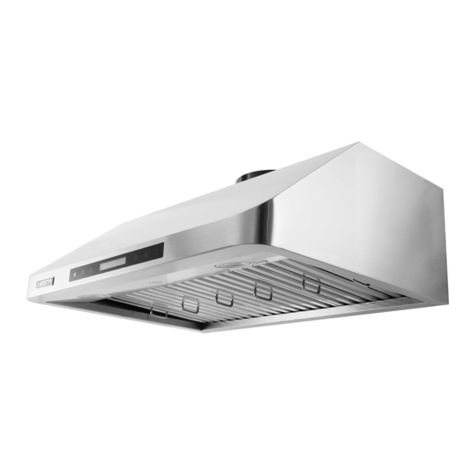
4
• SMOTHER FLAMES with a close-fitting lid, cookie sheet, or metal tray, then
KEEP FLAMMABLE OR COMBUSTIBLE MATERIAL AWAY FROM FLAMES.
If the flames DO NOT go out immediately, EVACUATEAND CALL THE FIRE
turn OFF the burner . BE CAREFUL TO PREVENT BURNS. NEVER PICK UP A
FLAMING PAN—you may be burned.
DEPARTMENT or dial your local emergencyservice immediately.
• Keep all fan, baffle, spaces filter, grease tunnel, oil container and grease-laden
surfaces clean. Grease should not be allowed to accumulate on fan, baffe,
spaces, fillter, grease tunnel and oil container.
• Always turn range hood ON when cooking at high heat or when cooking
• Use high settings on cooking range only when necessary.
• Never leave surface units unattended at high settings. Boilovers cause
Heat oils slowly on low or medium settings
.
•
Clean ventilating fan frequently.
•
Always use appropriate cook ware and utensils size.
•
Always use cookware appropriate for the size of the surface element.
flaming foods.
smoking and greasy spill overs that may ignite.
• Use only metal ductwork and this unit MUST be grounded.
• Suficient air is needed for proper combustion and exhausting of gases
through the duct to prevent back drafting.
• When cutting or drilling into wall or ceiling, be careful not to damage
electrical wiring or other hidden utilities.
• All electrical wiring must be properly installed, insulated and grounded.
• Old duct work should be cleaned or replaced if necessary to avoid the
possibility of a grease fire.
• Check all joints on duct work to insure proper connection and all joints
should be properly taped.
• Use this unit only in the manner intended by the manufacturer. If you have
questions, contact the vendor.



































